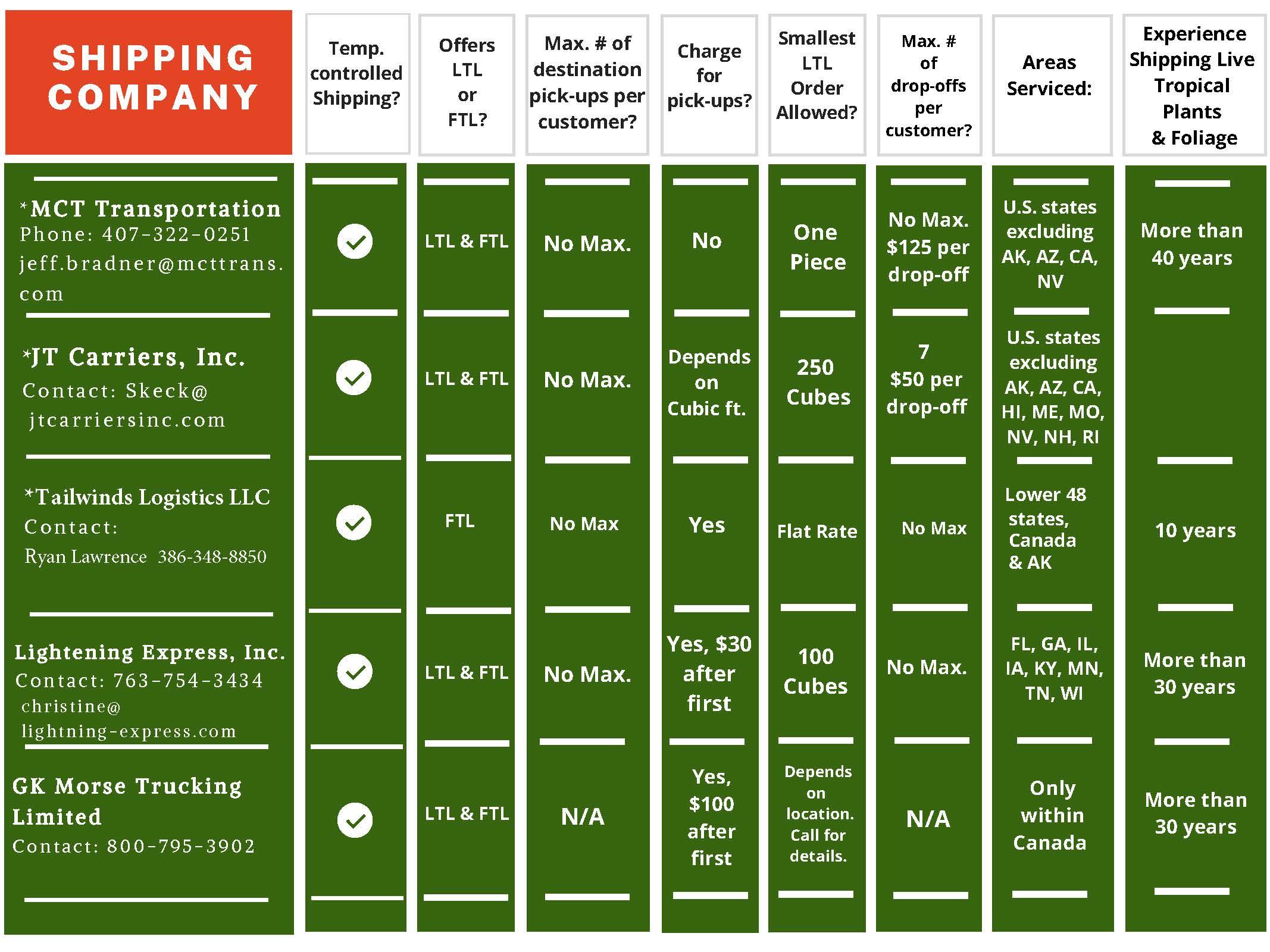Shipping Plant Materials
FNGLA offers this resource to assist those looking to have Florida plant materials shipped throughout the United States and Canada's provinces.
Here's a few need-to-knows before beginning your search:
- Ordering: Be prepared to plan ahead for the spring months! In the world of shipping plants, 'spring' generally is considered March, April and May. Begin contacting truck lines no later than January or February to get trucking lined up. Tropical Plant Int'l Expo (TPIE) is a great time to discuss spring shipping options with different service providers. Shipping during spring is very different compared to other times of the year due to increased demand. 'Spring' is considered peak shipping season. The start of the spring season is subject to influence by different factors. Shifts in weather and other factors can create a rush or a lull during the beginning or end of the spring shipping season.
- Understanding the packaging and loading: During the colder months, have the nursery double sleeve and staple the tops of loose plants. Dish gardens should have bubble wrap on sides and bottom. Liners may be double-boxed and may potentially include a heat pack. Winter packaging is typically more expensive due to the extra precautions taken.
- Transit: Shipping times vary depending on location and the method of shipment. The wait time is usually 2-7 days.
- Receiving Your Shipment: Check when driver opens the doors. Make sure everything is neat and orderly. Check your labels. If your box/loose count does not match your invoice, you should note the shortages immediately. Any discrepancies should be verified by driver. Note any discrepancies on bill of lading. Take note: loose plants are transported at the customer’s risk. Any damaged product should be documented and photographed and sent to the supplier right away.
- COST - understanding cost, getting a quote, how shipping is billed, how to pay: To get an accurate quote, you will need to know what you are shipping. You'll also need to know how many boxes you are looking to ship, and what their sizes are. You'll also need to know how many loose plants, and what pot sizes they are in. Are they under or over 50 inches? As for large trees, are the pots greater than 17 inches in height? Are the trees greater than and have a spread inches? Is the spread greater than 24 inches? You will need to know pot size, and height when wrapped and spread. Be sure to clarify who is paying for the shipment prior to shipping (i.e. - broker, shipper, cosignee, etc.)
Find a Shipping Company
Here's a few shipping companies to help guide your search. FNGLA members are denoted below with an * next to their company's name. Note: All information provided is strictly for guidance. Accuracy is intended, however not promised. Please contact providers to confirm.


